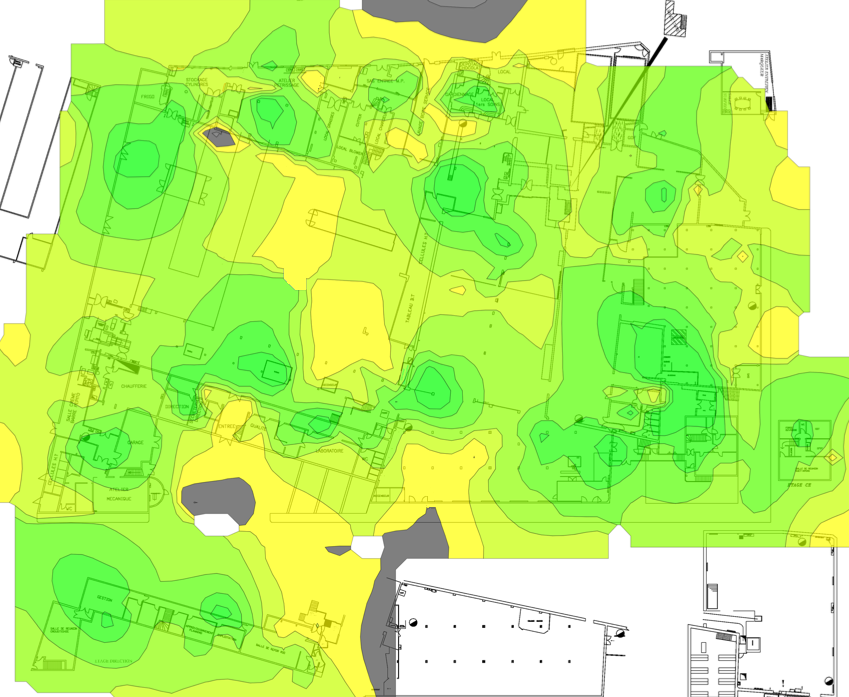Wi-Fi site surveys
Measure, plan, deploy and measure again. This is how we set up robust Wi-Fi infrastructures.

When it comes to Wi-Fi, buying an access point at the electronics store next door and installing it on the desk in the middle of the office works only for small spaces and still, there is no guarantees that it will work properly.
For bigger places like whole office buildings or warehouses, it is required to carry a study in order to define the most efficient locations for the access points. Setting up a whole Wi-Fi infrastructure without any survey leave the door open to bad signal coverage and interferences.
Planning
The Wi-Fi planning survey is the first step of any serious Wi-Fi installation. Its main purpose it to help define the location of the access points using many indicators, the most commonly used being :
- Received Signal Strengh Indicator (RSSI)
- Signal to Noise Ratio (SNR)
- Adjacent-Channel Interference (ACI)
- Co-Channel Interference (CCI)
Received signal strength indicator (RSSI) is a measurement of the power present in a received radio signal. The survey help to simulate the access points and measure the end devices RSSI. A signal of more than -70 dBm is considered enough.
Signal-to-noise ratio (SNR or S/N) is a measure used to compare the level of a desired signal to the level of background noise. SNR is defined as the ratio of signal power to the noise power, often expressed in decibels. A SNR of 20 dB is a healthy value for wireless LANs, more than 40 dB is an excellent signal.
Adjacent-channel interference (ACI) refers to degradation of performance resulting from overlapping frequency space that occurs due to an improper channel reuse design. If ACI does exist, the transmitted frames will become corrupted, the receivers will not send ACKs and L2 retransmissions will increase.
Co-channel interference (CCI) is crosstalk of two different access points using the same channel. It causes medium contention and network overhead and will result for the end user in a very slow network access.
Set up
With the planning survey results, we can set up the cabling, prepare the Wi-Fi controllers and access points and perform the first tests. If the planning and client requirements analysis were done properly, this phase is pretty straightforward as it just consists of following a list of well defined steps.
Validation
Once the cabling is done, the access points are up and running and everything is configured properly, a validation survey is required in order to confirm the whole infrastructure is working as expected. If anything is wrong, we either correct it or go back to the planning step, depending on the case.